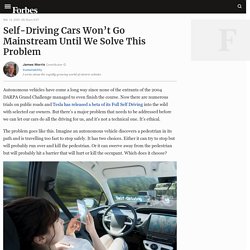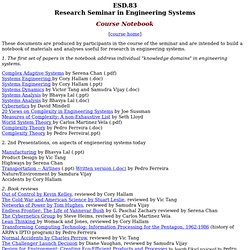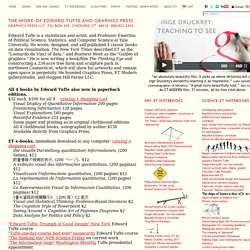

Infrastructure Cost Review. What Is Capability-Based Planning? Why Is It so Effective? Artificial Intelligence Is Not Enough to Create Fully Autonomous Cars For Now — Here’s Why. Why deep learning won’t give us level 5 self-driving cars. Why deep learning won’t give us level 5 self-driving cars. Self-driving cars drive more safely thanks to new algorithm. Taking a snooze at your car's steering wheel as it hurdles down a freeway is a terrible idea, but with the continued expansion of self-driving car technology, getting a few extra minutes of sleep on your commute may not remain a pipe dream for much longer.

But there are more than a few issues with this vision of the future. Chief among them is that the people don't trust self-driving cars, at least not enough to confidently put their lives in vehicles' "hands. " Research from computer scientists in Germany could swing public opinion, however. Armed with a new algorithm, autonomous vehicles would be able to make safety calls in real-time. The idea is that the vehicles would only be able to make harm-free choices, protecting passengers and pedestrians alike. Self-driving cars are headed toward an AI roadblock. IfIf you believe the CEOs, a fully autonomous car could be only months away. In 2015, Elon Musk predicted a fully autonomous Tesla by 2018; so did Google.
Delphi and MobileEye’s Level 4 system is currently slated for 2019, the same year Nutonomy plans to deploy thousands of driverless taxis on the streets of Singapore. GM will put a fully autonomous car into production in 2019, with no steering wheel or ability for drivers to intervene. There’s real money behind these predictions, bets made on the assumption that the software will be able to catch up to the hype.
On its face, full autonomy seems closer than ever. But the dream of a fully autonomous car may be further than we realize. It’s easy to see why car companies are optimistic about autonomy. But deep learning requires massive amounts of training data to work properly, incorporating nearly every scenario the algorithm will encounter. Self-Driving Cars Won’t Go Mainstream Until We Solve This Problem. Autonomous vehicles have come a long way since none of the entrants of the 2004 DARPA Grand Challenge managed to even finish the course.

Now there are numerous trials on public roads and Tesla has released a beta of its Full Self Driving into the wild with selected car owners. But there’s a major problem that needs to be addressed before we can let our cars do all the driving for us, and it’s not a technical one. It’s ethical. The problem goes like this. Imagine an autonomous vehicle discovers a pedestrian in its path and is travelling too fast to stop safely. This sounds like a simple choice, but the closer you look, the more nuances appear. We make these decisions naturally as human drivers.
The question is not just about the least amount of injury, though. Navy "UFO Patent" Documents Talk Of "Spacetime Modification Weapon," Detail Experimental Testing. In our continuing investigation into the bizarre inventions of Dr.

Salvatore Cezar Pais, an enigmatic aerospace engineer who works for the U.S. Navy, The War Zone has just obtained a wide range of documents detailing experiments that the Naval Air Warfare Center Aircraft Division (NAWCAD) conducted to test the core concepts and technologies underlying his seemingly out of this world "UFO patents. " These same patents were vouched for by the head of the Navy's aerospace research enterprise who cited Chinese advances in similar technologies as one of the reasons why the Navy was filing them. The War Zone's most recent report on the strange circumstances surrounding these patents underlined that there were indeed some type of physical experiments conducted related to them, even if very limited. Now, new Freedom of Information Act releases provide unprecedented insights not just into how seriously the Navy took Dr.
DON via FOIA. Your Shopping Cart – ForeverSpin. Systems Engineering Advancement Research Initiative - SEAri at MIT. Home Page for the Wright Brothers Aeroplane Company and wright-brothers.org. Serg: Software Engineering Research Group. Conferences in Research and Practice in IT. ESD. ESD.83 Research Seminar in Engineering Systems Course Notebook [course home] These documents are produced by participants in the course of the seminar and are intended to build a notebook of materials and analyses useful for research in engineering systems. 1.

The first set of papers in the notebook address individual "knowledge domains" in engineering systems. MIT Strategic Engineering Research Group: Olivier L. de Weck. The Work of Edward Tufte and Graphics Press. Edward Tufte is a statistician and artist, and Professor Emeritus of Political Science, Statistics, and Computer Science at Yale University.

He wrote, designed, and self-published 4 classic books on data visualization. The New York Times described ET as the "Leonardo da Vinci of data," and Business Week as the "Galileo of graphics. " He is now writing a book/film The Thinking Eye and constructing a 234-acre tree farm and sculpture park in northwest Connecticut, which will show his artworks and remain open space in perpetuity. He founded Graphics Press, ET Modern gallery/studio, and Hogpen Hill Farms LLC. Visual Display of Quantitative Information 200 pages.